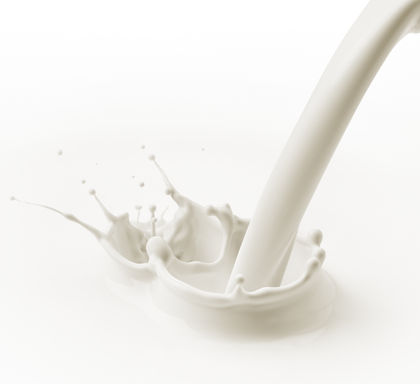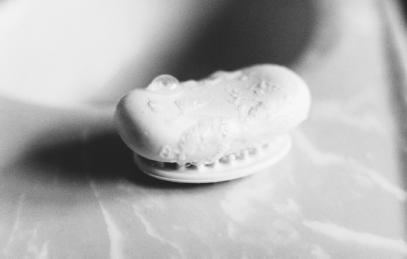Mixtures - How it works

Mixtures and Pure Substances
A mixture is a substance with a variable composition, meaning that it is composed of molecules or atoms of differing types. These may have intermolecular bonds, or bonds between molecules, but such bonds are not nearly as strong as those formed when elements bond to form a compound.
Examples of mixtures include milk, coffee, tea, and soft drinks—indeed, they include virtually any drink except for pure water, which is a rarity, because water is highly soluble and tends to contain minerals and other impurities. Air, too, is a mixture, because it contains oxygen, nitrogen, noble gases, carbon dioxide, and water vapor. Likewise metal alloys such as bronze, brass, and steel are mixtures.
STRUCTURAL AND PHENOMENOLOGICAL DISTINCTIONS.
Before chemists accepted the atomic theory of matter, it was often difficult to distinguish a mixture, such as air or steel, from pure substances, which have the same composition throughout. Pure substances are either elements such as oxygen or iron, or compounds—for example, carbon dioxide or iron oxide. An element is made up of only one type of atom, while a compound can be reduced to one type of bonded chemical species—usually either a molecule or a formation of ions.
A distinction between mixtures and pure substances based on atomic and molecular structures is called, fittingly enough, a structural definition. Prior to the development of atomic theory by English chemist John Dalton (1766-1844), and the subsequent identification of molecules by Italian physicist Amedeo Avogadro (1776-1856), chemists defined compounds and mixtures on the basis of phenomenological data garnered through observation and measurement. This could and did lead to incorrect suppositions.
PROUST AND THE DEBATE OVER CONSTANT COMPOSITION.
Around the time of Dalton and Avogadro, French

Proust's contemporary and intellectual rival Claude Louis Berthollet (1748-1822) observed that when metals such as iron are heated, they form oxides in which the percentage of oxygen increases with temperature. If constant composition is a fact, he challenged Proust, then how is this possible? Proust maintained that the proportions of elements in a compound are always the same, a hypothesis Berthollet countered by observing that metals can form variable alloys. Bronze, for instance, is an alloy of tin and copper at a ratio of about 25:75, but if the ratio were changed to, say, 30:70, it would still be called bronze.
At the time, the equipment—both in terms of knowledge and tools for analysis—simply did not exist whereby Berthollet's assertions could be successfully proven wrong. Indeed, Berthollet, a student of Lavoisier who contributed to progress in the study of acids and reactants, was no anti-scientific villain: he was simply responding to the evidence as he saw it. Only with the discovery of subatomic particles in the late nineteenth and early twentieth centuries, discoveries that changed the entire character of chemistry as a discipline, did it truly become possible to answer Berthollet's challenges.
Chemists now understand that the oxide formed on the surface of a metal is a compound separate from the metal itself, and that alloys (discussed later in this essay) are not compounds at all: they are mixtures.
Mixtures and Compounds
With our modern knowledge of atomic and molecular properties, we can more fully distinguish between a compound and a mixture. First, a mixture can exist in virtually any proportion among its constituent parts, whereas a compound has a definite and constant composition. Coffee, whether weak or strong, is still coffee, but if a second oxygen atom chemically bonds to the oxygen in carbon monoxide (CO), the resulting

Second, the parts of a mixture retain most of their properties when they join together, but elements lose their elemental characteristics once they form a compound. Sugar is still sweet, regardless of the substance into which it is dissolved. In coffee or another drink, it may no longer be dry and granular, though it could be returned to that state by evaporating the coffee. In any case, dryness and granularity are physical properties, whereas sweetness is a chemical one. On the other hand, when elemental carbon bonds with hydrogen and oxygen to form sugar itself, the resulting compound is nothing like the elements from which it is made.
Third, a mixture can usually be created simply by the physical act of stirring items together, and/or by applying heat. As discussed below, relatively high temperatures are sometimes needed to dissolve sugar in tea, for instance; likewise, alloys are usually formed by heating metals to much higher temperatures. On the other hand, the formation of a compound involves a chemical reaction, a vastly more complex interaction than the one required to create a mixture. Carbon, a black solid found in coal, can be mixed with hydrogen and oxygen—both colorless and odorless gases—and the resulting mess would be something; but it would not be sugar. Only the chemical reaction between the three elements, in specific proportions and under specific conditions, results in their chemical bonding to form table sugar, known to chemists as sucrose.
Homogeneous and Heterogeneous Mixtures
HOMOGENEOUS MIXTURES AND SOLUTIONS.
As we have seen, the composition of a mixture is variable. Coffee, for instance, can be weak or strong, and milk can be "whole" or low-fat. Beer can be light or dark in color, as well as "light" in terms of calorie content; furthermore, its alcohol content can be varied, as with all alcoholic drinks. Though their molecular composition is variable, each of the mixtures described here is the same throughout: in other words, there is no difference between one region and another in a glass of beer. Such a mixture is described as homogeneous.
A homogeneous mixture is one that is the same throughout, but this is not the same as saying that a compound has a constant composition. Rather, when we say that a homogeneous mixture is the same in every region, we are speaking phenomenologically rather than structurally. From the standpoint of ordinary observation, a glass of milk is uniform, but as we shall see, milk is actually a type of emulsion, in which one substance is dispersed in another. There are no milk "molecules," and structural analysis would reveal that milk does not have a constant molecular composition.
Coffee is an example of a solution, a specific type of homogeneous mixture. Actually, most homogeneous mixtures can be considered solutions, but since a solution is properly defined as a homogeneous mixture in which one or more substances is dissolved in another substance, a 50:50 homogeneous mixture is technically not a solution. When particles are perfectly dissolved in a solution, the composition is uniform, but again, this is not a compound, because that composition can always be varied.
HETEROGENEOUS MIXTURES.
Anyone who has ever made iced tea has observed that it is easy to sweeten when it is hot, because temperature affects the ability of a solvent such as water—in this case, water with particles from tea leaves filtered into it—to dissolve a solute, such as sugar. Cold tea, on the other hand, is much harder to sweeten with ordinary sugar. Usually what happens is that, instead of obtaining a homogeneous mixture, the result is heterogeneous.
Whereas every region within a homogeneous mixture is more or less the same as every other region, heterogeneous mixtures contain regions that differ from one another. In the example we have used, a glass of cold tea with undissolved sugar at the bottom is a heterogeneous mixture: the tea at the top is unsweetened or even bitter, whereas at the bottom, there is an overly sweet sludge of tea and sugar.
FROM HOMOGENEOUS TO HETEROGENEOUS AND BACK AGAIN.
The distinction between homogeneous and heterogeneous solutions only serves to further highlight the difference between compounds and mixtures. Whereas the composition of a compound is definite and quantitative (so many atoms of element x bonded with so many atoms of element y in such-and-such a structure), there is less of a sharp dividing line between homogeneous and heterogeneous solutions.
When too much of a solute is added to the solvent, the solvent becomes saturated, and is no longer truly homogeneous. Such is the case when the sugar drifts to the bottom of the tea, or when coffee grounds form in the bottom of a coffee pot containing an otherwise uniform mixture of coffee and water.
Milk comes to us as a homogeneous substance, thanks to the process of homogenization, but when it comes out of the cow, it is a more heterogeneous mixture of milk fat and water. In fact, milk is an example of an emulsion, the result of a process whereby two substances that would otherwise form a heterogeneous mixture are made to form a homogeneous one.
Comment about this article, ask questions, or add new information about this topic: